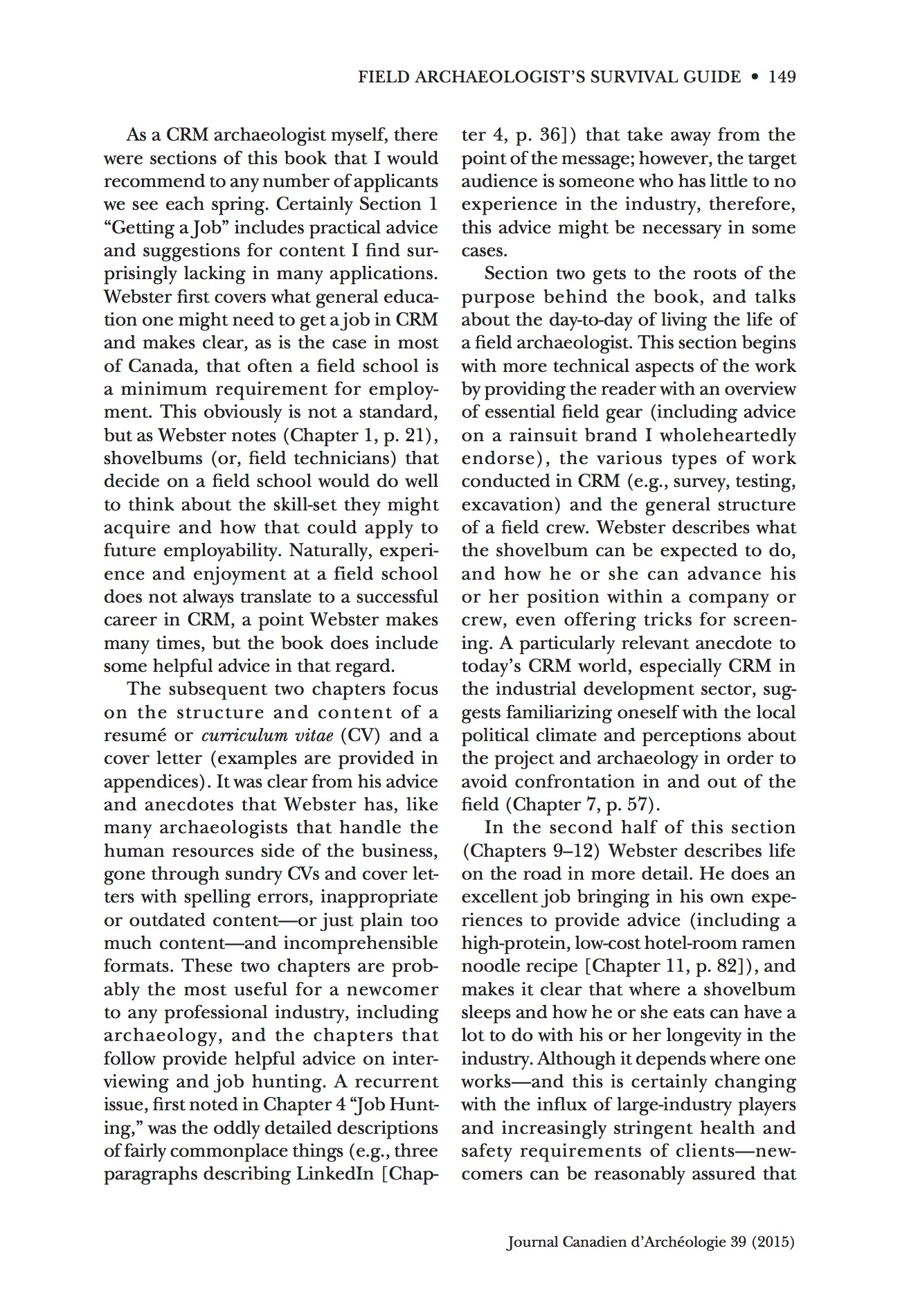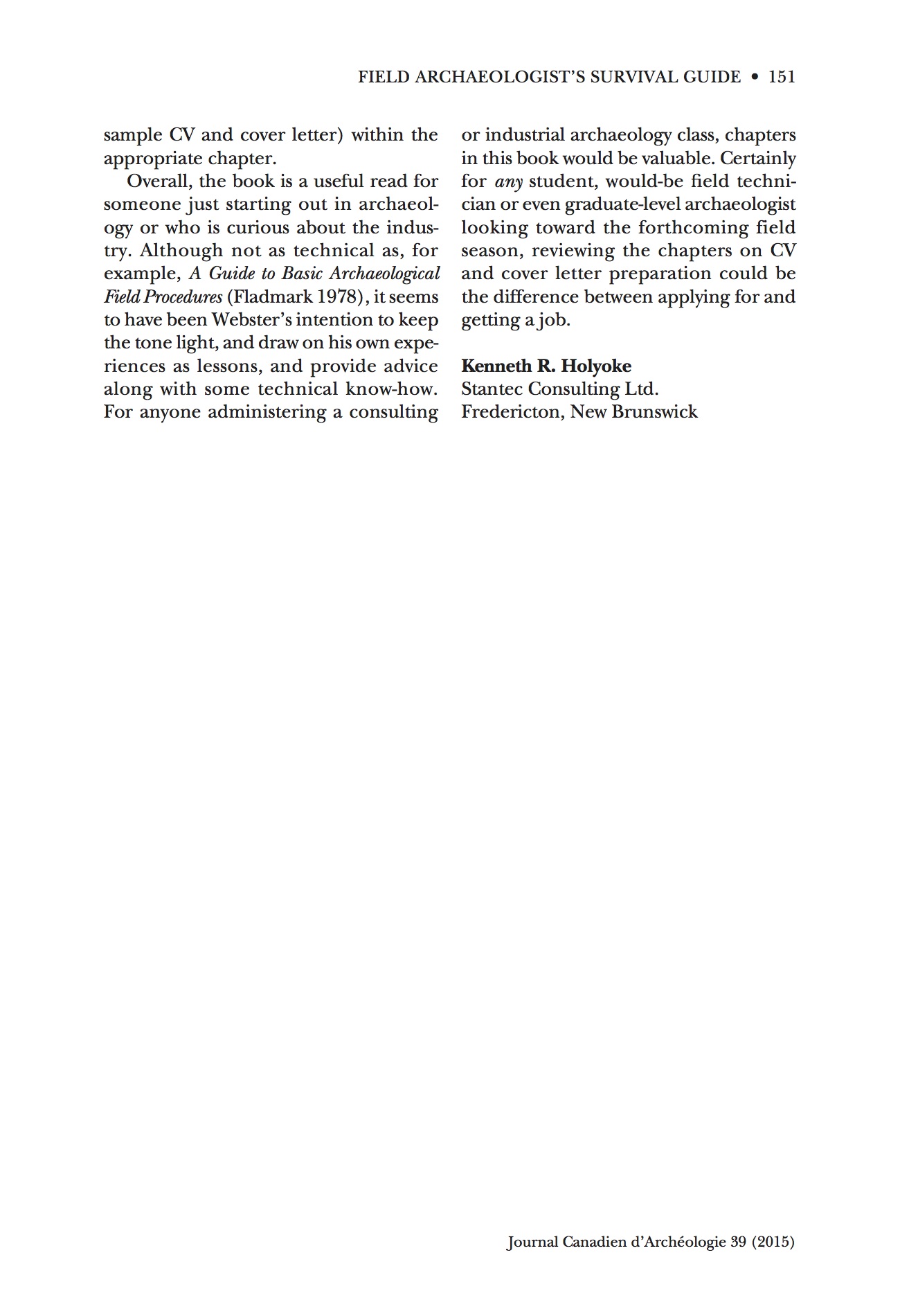This is just a quick post to relay some nice reviews I received for the ield Archaeologist's Survival Guide (Left Coast Press, 2014).
Canadian Journal of Archaeology 39:148-151 (2015)
American Reference Books Annual (ARBA) Reviews
Webster, Chris. Field Archaeologist's Survival Guide: Getting a Job and Working in Cultural Resource Management. Walnut Creek, Calif., Left Coast Press, Inc., 2014. 157p. illus. index. $24.95; $24.95 (e-book). ISBN 13: 978-1-61132-928-5; 978-1-61132-930-8 (e-book).
Are you a librarian at a college or university that offers archaeology courses? Do you work in a college or university career office that maintains a collection of career resources? Do you want to help your college students find their dream job? If so, then consider adding this honest and straightforward guide to working in the field as an archaeologist to your collections.
Chris Webster's Field Archaeologist's Survival Guide covers advice on working as an archaeologist, from which classes college students should take, how to choose participating in a field school, how to prepare curriculum vitae (CV), to how to cook meat on a shovel on a campfire. Webster's guide begins with how to prepare for the working world as an archaeologist for college students and ends with what to do during the winter season when there is no outdoor fieldwork in the colder climates. There are detailed chapters on how to develop a CV, resumes, and cover letters, including how to describe various types of military experience on a CV or a resume. Webster provides advice on where to find job listings, how to respond to job advertisements, and how to send resumes and cover letters to companies that do not have current job openings listed.
Supplying invaluable career advice not usually discussed in archaeology classes, Webster describes equipment, projects, lodging, and other logistical considerations. Webster lists the type of equipment needed for archaeology and provides explanations as to why the gear is important. Next, the author describes different types of archaeological projects and jobs in cultural resource management so prospective employees know what to expect if hired. With real-world experience and a knack for storytelling, Webster gives a myriad of suggestions on types of lodging, such as living out of a van, camping, and staying in hotels. He includes several recipes and recommendations on how to cook in hotel rooms.
Additionally, the author explains how to use information to be successful as an archaeologist, with the perspective of a seasoned archaeologist imparting wisdom not learned in the classroom to future archaeologists. For example, he describes the University Transverse Mercator (UTM) grid, the township and range system, and the Smithsonian Trinomial System. He also introduces drawing maps, lumber sizing, and the Munsell Book of Color adapted to soil samples. Becoming successful may pose challenges, however, and the author devotes an entire chapter to unemployment. Although specific to the state of Nevada, he believes his information about the unemployment process can be applicable to other states.
The author closes with the reminder that becoming an archaeologist is really a dream job. Telling a story about a wealthy investment banker he met, the author wrote that the banker said that he wished he had the job as the archaeologist. Lastly, short but thorough appendixes correspond to the chapters and provide sample CVs, examples of cover letters, equipment and clothing checklists for fieldwork, sample interview questions to ask, and a checklist for what to do during the winter off-season.—Kay Shelton












